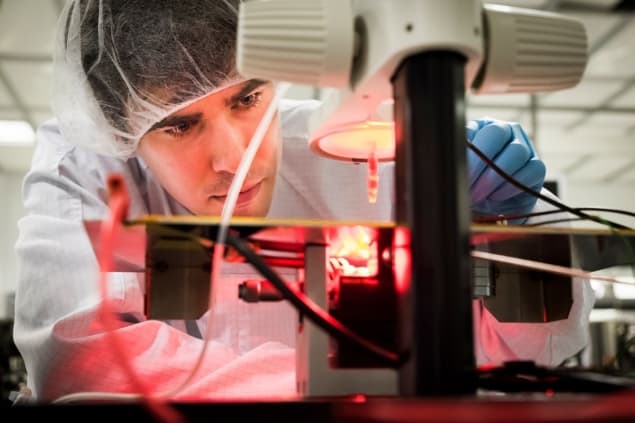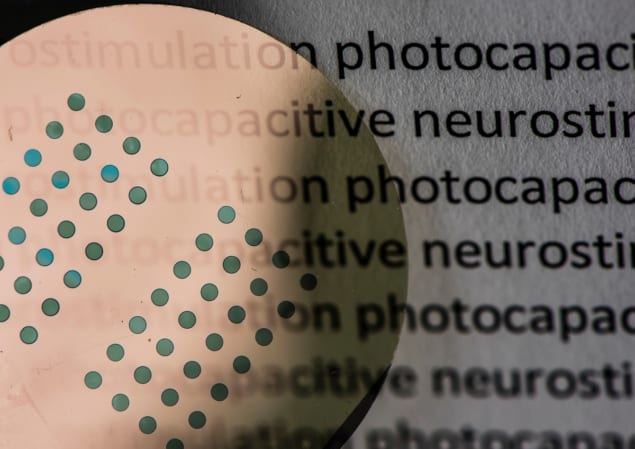
A new organic device can influence the electrical properties of single cells and tissues with light, opening up an exciting and powerful opportunity for biomedical scientists in various fields, e.g. the stimulation of nerve cells. Marie Jakešová from the Laboratory of Organic Electronics at the Linköping University, Sweden, and her colleagues are the first to produce a device based on organic materials that controls the electrical properties of single cells. This device, called an organic electrolytic photocapacitor (OEPC) can replace traditional electrodes, is minimally invasive and works with no wires, or genetic engineering.
What came first: the chicken or the egg?
In this case the question is not rhetorical: the group had previously demonstrated the stimulation of ganglion cells from blind chick retina by OEPC. They have now taken their approach a step further and show how it works on a single cell level as well, with the help of egg cells from the African clawed frog (Xenopus laevis). Their results show that the OEPC successfully changes the charge distribution of the cell membrane, which they can see from the opening of the potassium channels after illumination.

Seeing through walls
The group uses a specific mixture of organic materials, whose electron structure makes light absorption a hundred times more efficient than in a silicon wafer, allowing the fabrication of devices with nanoscale thickness. By optimizing the material combination of their device as they describe in Science Advances, the team have designed it to operate in the 630–660 nm wavelength range, where body tissues are the most transparent for light.
“The technology we are developing aims to be the simplest and most minimalistic technique for artificially stimulating nervous tissue” – explains Eric Glowacki, principal investigator in the Laboratory of Organic Electronics, meaning that similar devices have the prospect of in vivo application such as in peripheral nerve stimulation.
The device operates based on capacitive coupling, where energy transfers either within one electric network or between distant networks in the presence of an electrical field. The researchers demonstrate that the capacitive coupling to the studied egg cells is more efficient than what they first expected despite the presence of the vitelline membrane (characteristic for egg cells) on top of the cell membrane, making it more difficult for the light to penetrate. Moreover, numerical modelling proves that the experienced voltage exceeds the threshold level needed to trigger the firing of nerve cells.

Could light and sound treat Alzheimer’s disease?
From telecommunication to treating neural disorders
“[It is important] to call upon the logic that modern telecommunication is based on optoelectronic elements: light is transduced to electrical signals,” Glowacki points out. The researchers discuss that the path is worth exploiting further and the optimization of their OEPC devices, based on the same principles as modern telecommunication, shows great potential – especially since their prototype survives sterilization and its stability is relatively constant even after a large number of illumination cycles. They believe that once they optimize their OEPC devices, integration with sophisticated implantable platforms can lead to the treatment of neural disorders in a less invasive and, above all, safe manner.



